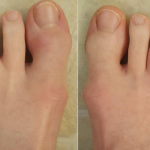To measure disease activity and treatment progress, some rheumatologists use cDAPSA, a tool that has been adapted from measures of rheumatoid arthritis to assess more joints, such as feet, which tend to be affected in patients with PSA. cDAPSA paints a global picture of patient status and pain, according to Dr. Mease. “It’s something you can just do right there in the office. … You add all of these things together, and you’ve got your score,” he says.
However, because the test primarily focuses on articular manifestations, rheumatologists are not certain patients who achieve cDAPSA targets are also achieving comprehensive disease control across a wider range of symptoms not included in the measure. Thus, the current study sought to assess the ability of cDAPSA to provide a relevant indication of comprehensive treatment responses to apremilast. The results suggest cDAPSA can be used to monitor patients using apremilast, because domains not captured by cDAPSA moved in the same direction as cDAPSA.
According to Dr. Mease, all symptoms improved and skin and enthesitis tracked together closely. “It’s reassuring to see that a simple measure like this can work well,” he says. He notes the next step would be to see how well cDAPSA tracks patient response to other agents, such as biologics.
Patient Selection
The new findings provide a framework for rheumatologists to identify patients in clinical practice who are most likely to achieve optimal treatment responses with apremilast and monitor them. This ability is important because, according to Dr. Mease, “Apremilast does not have quite the potency of the other drugs, but its safety record is pristine.”
However, Dr. Mease cautions that safety should not be confused with tolerability. During the first month or so of apremilast use, approximately 20% of patients will experience diarrhea, headache and/or nausea. Patients who can tolerate these symptoms will likely find they abate over time. This period of adjustment can be facilitated by starting at a low dose, allowing the body to become accustomed to the treatment before adjusting to the full dose. After two to three months, the side effects should abate, and the patient should experience no safety concerns.
Lara C. Pullen, PhD, is a medical writer based in the Chicago area.
Reference
- Mease PJ, Gladman DD, Ogdie A, et al. Treatment to target in psoriatic arthritis with apremilast: Probability of achieving targets and comprehensive control of disease manifestations. Arthritis Care Res (Hoboken). 2020 Jan 7. [Epub ahead of print]


